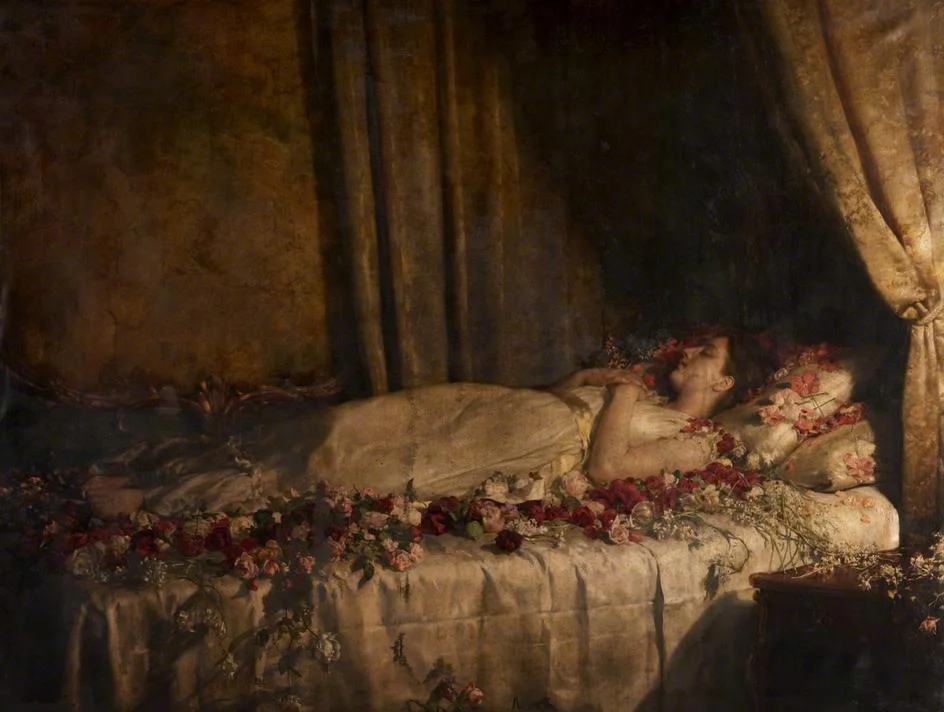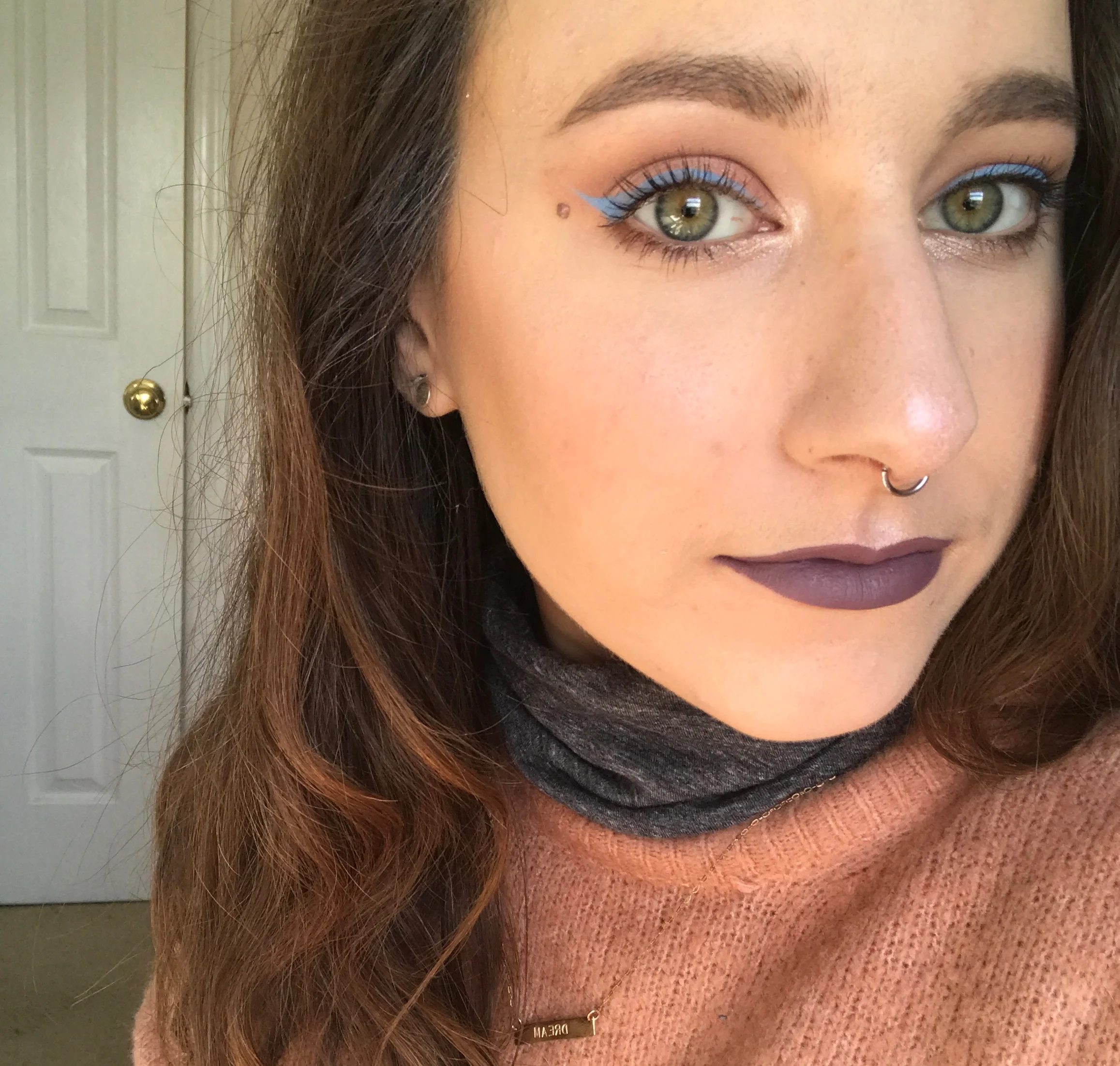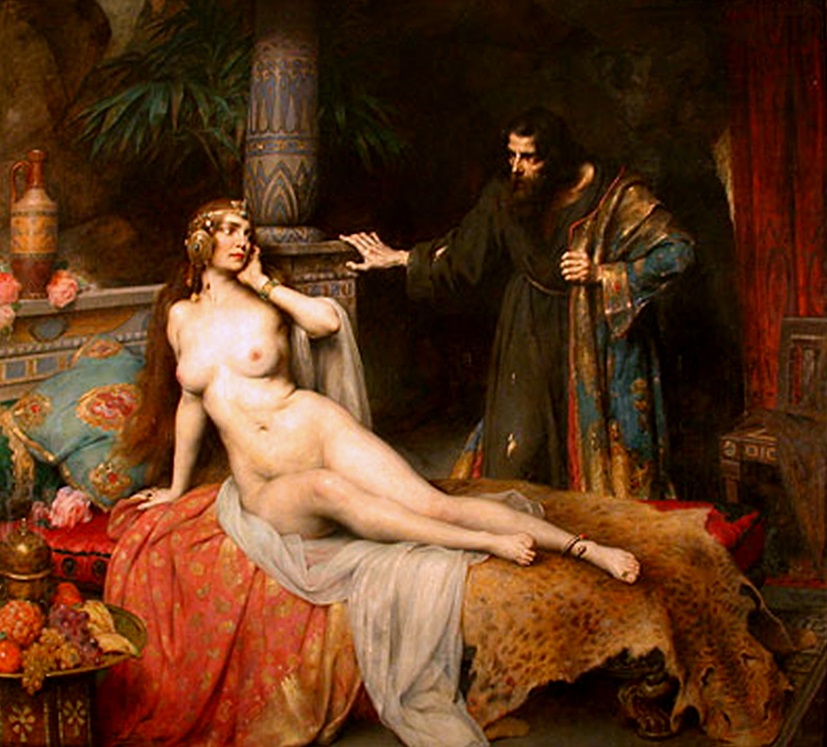There are many reasons why the pinup aesthetic appeals to women of color.
Read MoreVia @tigermouth

Via @tigermouth
There are many reasons why the pinup aesthetic appeals to women of color.
Read More
As a tiny bruja is the late 80s, I was obsessed with gothic fairy-tale fantasy films. Here I am, in my magick thirties, still playing dress up…
Read More
The Death of Albine (1895) by John Maler Collier.
There are many ways we attempt to cast the spell of remembrance, to leave our mark, to cause a beautiful and painful ache in our absence even if it is only temporary. This is just another way we strange and intricate humans crave to be loved.
Read More
Photo by Monique Quintana
Bluish, you find the stone. They are the diamonds she once told you about...
Read More
Peter Paul Ruben
BY LISA MARIE BASILE
You know, people have tried to rule over women's bodies since the beginning of time. We are the most feared things on earth, of course, which is why we must be oppressed and destroyed. We must be plucked from our shells and turned into pearls; or, we must be simple and quiet, as mute girls in the Garden.
Our bodies are used and abused while our contributions and voices often go unheard. Whether we are genetic or surgeried doesn't matter; it just matters that we attain perfection: we are territories that must be claimed, judged, shamed, changed, and belittled. We’ve died to fit standards. You know it, you feel it every day, either in your own life or as part of someone else's.
We’re told to adopt or straddle all sorts of impossible archetypal binaries (whore in the sheets, lady in the streets; pretty but not slutty; sweet but not overly-emotional, sexual but not whore-ish; smart but also hot; skinny but with big boobs, confident but not too assertive, girly but not prissy, active but not tomboyish, curvy but not fat).
We’ve been hung for our magic, for our nature, for our blood. We’ve been punished, burned, guillotined and excommunicated for being different, for being powerful, for not abiding by strict social constructs. We’ve been sold, raped, traded and silenced. And we’re tired. We are tired of being told how to be.
And this is awful because a person can’t magically snap her fingers to love themselves; centuries of shame and internalized judgement have bloomed in us; we carry ancestral trauma. We often take years to develop a sense of self-love that exists on its own, without being I.V.-fed by the compliments of others. This is no fault of ours; this is the world around us making us sick.
To walk around in a body that society still sees as a bad or unattractive is a sort of perpetual prison; you feel like you should love yourself and yet every magazine cover, every TV show, every depiction of women everywhere has little to no representation or inclusivity.
It is so hard to feel powerful and beautiful sometimes. Most of us (since the majority of women in this country are a size 14 or over) have never seen a female lead with our body type. Think on that. What if every movie you’ve ever loved replaced the leading lady with someone over, say, size 10? What would you think of yourself then?
RELATED: How To: A Spell For Body Acceptance & Appreciation (NSFW)
So it’s no wonder we revolt – using the Internet.
We’ve forced a space for inclusivity online, and we don’t need money or power to do it. We just community and love. And we should be applauded for our continuous, tiring, Sisyphean work.
In today's world, we just need a free Instagram page where we can share our stories, show our bodies and say: enough is enough. There's something incredible about that open market of love.
Cellulite, big thighs, saggy breasts, soft tummies – it’s all there. Because if we normalize these things we understand they’re not bad or poisonous or ugly or different. In fact, ironically, they’re the norm.
But.
But there is a difference between touting body positivity and self-love and using flawed or reductive (not to mention, isolating) tactics to increase body awareness.
Enter Instagram's trendy same day, different angle photos. At first glance, they seem assuring, bold, beautiful. They even feel downright necessary. Because when you see a girl with a toned stomach, standing with her legs apart just so, you feel better about her four or five tummy rolls when she sits down in the picture to the left. It means she’s posed! It means she’s real! It means she’s just like you. I admit I really liked them too, until I started realizing that they were fraught with many of the same issues that caused them.
These photos may bring a sense of self-love to some people, and we shouldn’t discount that.
But these photos are actually more harmful than we might realize, and I'm not sure they're the right approach.
For one, they affirm the binary of “hot” versus “not” rather than subverting it or ignoring it. You can call (or, infer) one photo a “good” angle and the other a “bad angle” (or you can imply this without explicitly saying it) or you could just post a picture of your body – curves, rolls, big thighs, cellulite – and say nothing of it.
It's like there always has to be a novelty or game around our bodies; they still can't just be.
We don’t need to be told that the posed, butt-out, tummy-in, breasts-up photo is the ‘fake’ or ‘forced’ one. We know that already.
On one hand, there are plenty of young girls who might feel goodknowing that one photo is ‘fake’ and the other is ‘real,’ and I realize this might be helpful to them.
RELATED: How I Combat Shaming Comments With Sexy Self Portraits (NSFW)
But what feels good right now might actually be delaying what’s right in the long run. We don’t need to play this game; we can simply exist. Young women will start to see themselves represented, without having to know which shot is hot and which shot is not.
Perhaps equally as importantly is the fact that these posed and un-posed pictures (and let's call it as it is: the un-posed pictures are still often posed) tend to come from people who are traditionally considered 'attractive' or 'fit.'
Now, there are a lot of nasty assumptions around being thin (disordered eating, the claim that thin bodies aren’t womanly enough), but to larger women who have been systematically devalued by men and other women as well as the media their entire lives, it feels a bit flippant, a bit gauche, to show a size 2 or 4 body in its “bad” pose.
Because despite those aforementioned assumptions, there are still plenty of elements of skinny privilege in this sort of body activism.
If you’re, say, a size 2 and fit (but happen to have a roll when you sit down), you may be reducing the reality that larger-bodied women have had to face; they’ve seen flaws like yours on bodies like yours be called “cute” or “sweet," while they’ve been called words I refuse to type here.
In that sense, many of those Instagrammers are contributing to a larger issue: that a body is capable of looking ugly and bad, even if it is typically considered ‘perfect.’ And that’s a problem, because there are millions of women have been taught they should kill for that ‘bad pose’ body.
In the end, it's nuanced, isn't it? Taking selfies is a powerful statement of self-love and an important act of self-portraiture, no matter the body size or type. If a woman feels beautiful, she ought to capture that. That is power.
But these same day-different angle photos are different. No one is intending on hurting anyone (and this isn't about shaming or blaming those good intentions). Women ought not feel badly for taking part in these acts of self-love and digital dissent.
But there's more here than meets the eye.
In our fight against body shame, these photos explicitly accept the fact that one body is better than the other. That in the same day a girl can be ‘hot’ and then ‘not’, simply by rearranging her stance.
The better call? Just show off your body. Be you. Don’t use qualifiers. Take up space. Selfie the space you take. And show it, without reason. Without explanation.
Lisa Marie Basile is the founding editor-in-chief of Luna Luna Magazine and moderator of its digital community. Her work has appeared in The Establishment, Bustle, Bust, Hello Giggles, Marie Claire, Good Housekeeping, Cosmopolitan and The Huffington Post, among other sites. She is the author of Apocryphal (Noctuary Press), war/lock (Hyacinth Girl Press), Andalucia (The Poetry Society of New York) and Triste (Dancing Girl Press). Her work can be found in PANK, the Tin House blog, The Nervous Breakdown, The Huffington Post, Best American Poetry, PEN American Center, The Atlas Review, and the Ampersand Review, among others. She has taught or spoken at Brooklyn Brainery, Columbia University, New York University and Emerson College. Lisa Marie Basile holds an MFA from The New School. @lisamariebasile

Via cromos
When aesthetic is subversive, it is both strange and beautiful…
Read More
Courtesy of Anna Szilagyi
This message sounds appealing on the surface, and even liberating and empowering. The pervasive trend can become isolating, though, when you don’t want your natural skin to show through. Those of us with acne and scarring often take comfort in the fact that a beauty blender and some full-coverage foundation can mask our redness. Using makeup to cover my skin takes my mind off of blemishes and insecurity, and that – spending a little extra time, not less – lets me focus on living my life and getting shit done.
Read More
12 poets, KGB Bar.
Read More
Image Courtesy of Sudsy Sirens
...the magick of the joyfully macabre.
Read More
...a small business with an old-school heart and a politicized spirit.
Read More